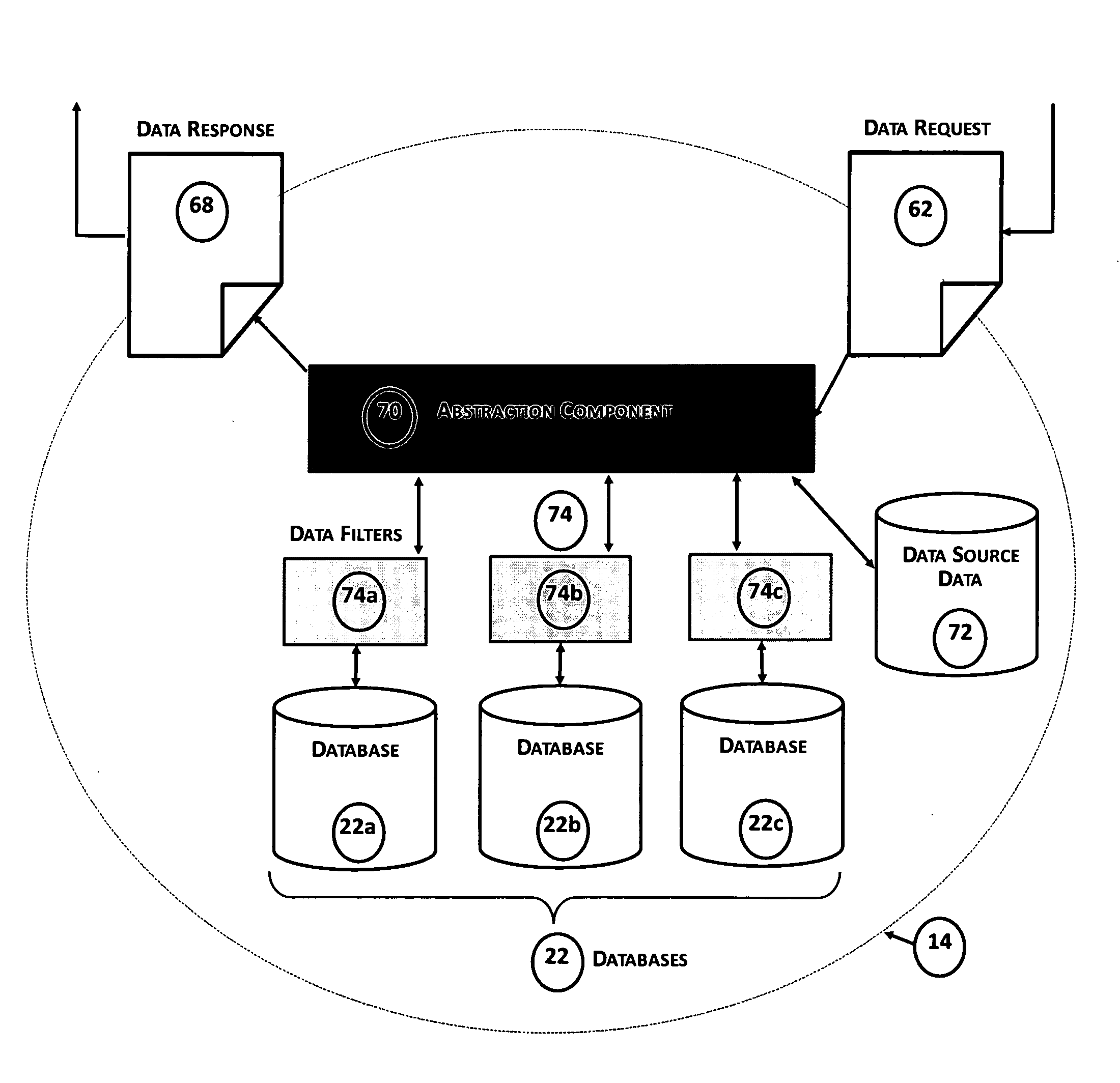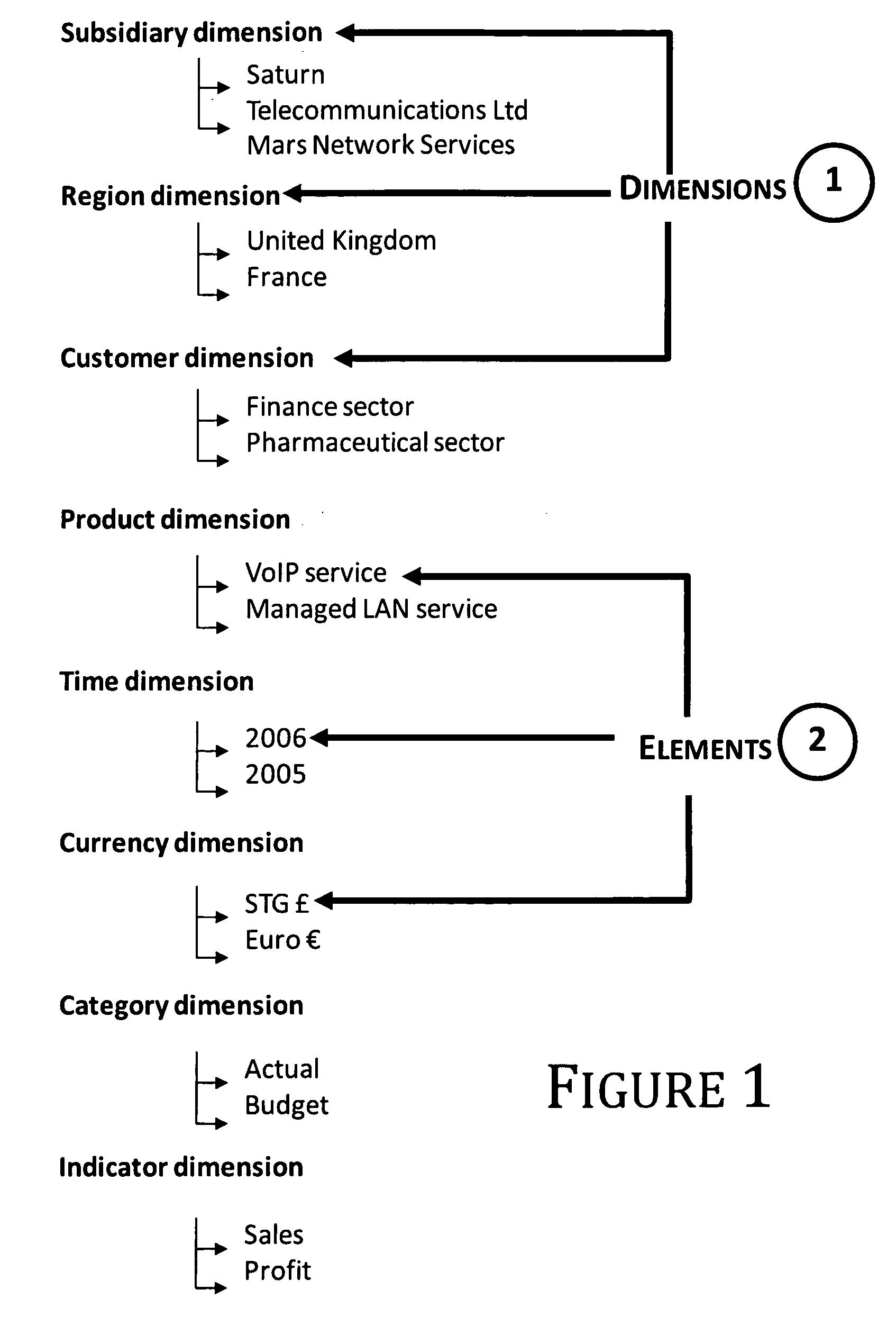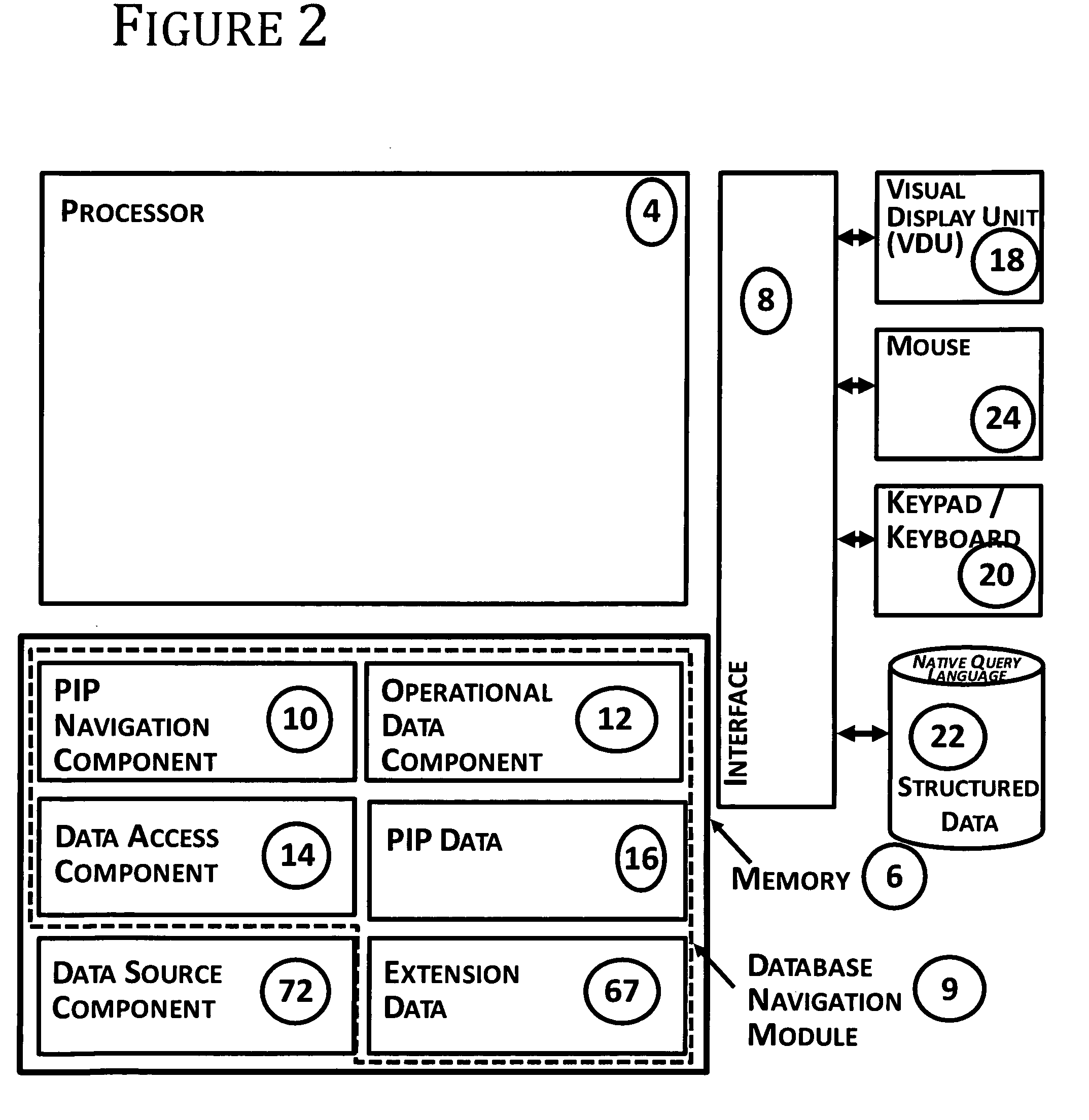Data Navigation Module, Apparatus and Method
a data navigation module and structured database technology, applied in special data processing applications, instruments, electric digital data processing, etc., can solve the problems of complex structured database, large number of users, and large number of data points
- Summary
- Abstract
- Description
- Claims
- Application Information
AI Technical Summary
Benefits of technology
Problems solved by technology
Method used
Image
Examples
Embodiment Construction
[0017]According to one aspect of the invention, the present invention provides a navigation module for a structured database having a multiplicity of dimensions and comprising a plurality of data points. Each data point has a location in the database defined by a data point vector comprising a multiplicity of elements wherein respective elements correspond to respective dimensions of the database. The navigation module is operative to present data point values retrieved from the database on a user interface and to receive user input.
[0018]An example of a user interface may comprise a visual display unit (vdu) and the navigation module is operative to display data point values on the display screen of the vdu. The user interface may also comprise a pointing device such as a mouse, or a touch sensitive display screen, and user input may be generated by a user selecting an item displayed on the display screen with the pointing device or touching a corresponding part of the display scre...
PUM
 Login to View More
Login to View More Abstract
Description
Claims
Application Information
 Login to View More
Login to View More - R&D
- Intellectual Property
- Life Sciences
- Materials
- Tech Scout
- Unparalleled Data Quality
- Higher Quality Content
- 60% Fewer Hallucinations
Browse by: Latest US Patents, China's latest patents, Technical Efficacy Thesaurus, Application Domain, Technology Topic, Popular Technical Reports.
© 2025 PatSnap. All rights reserved.Legal|Privacy policy|Modern Slavery Act Transparency Statement|Sitemap|About US| Contact US: help@patsnap.com



